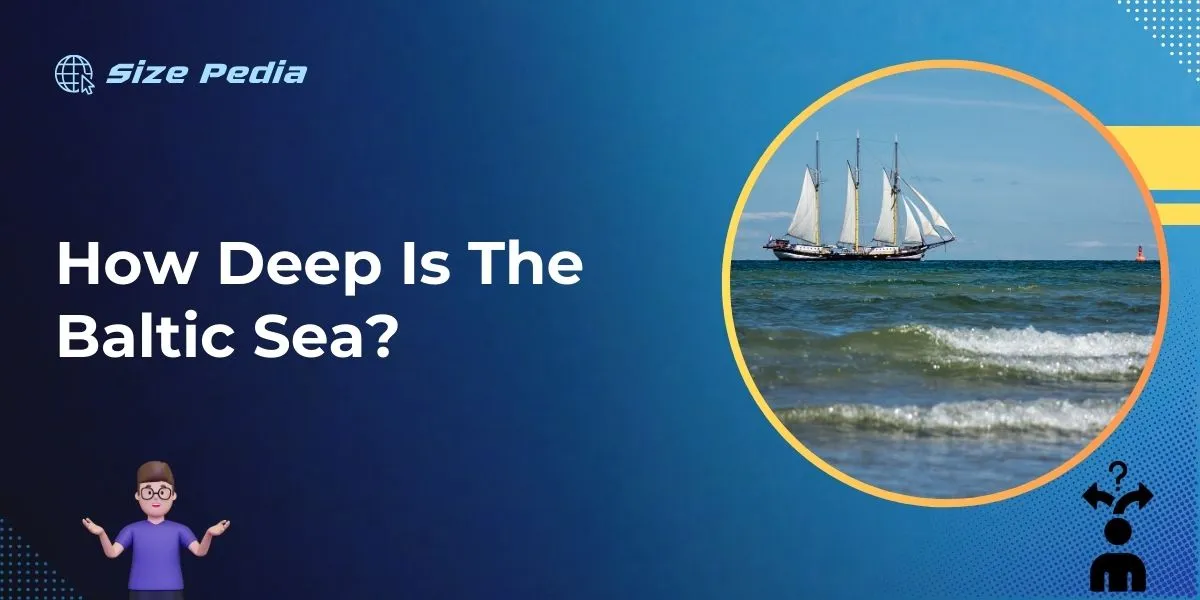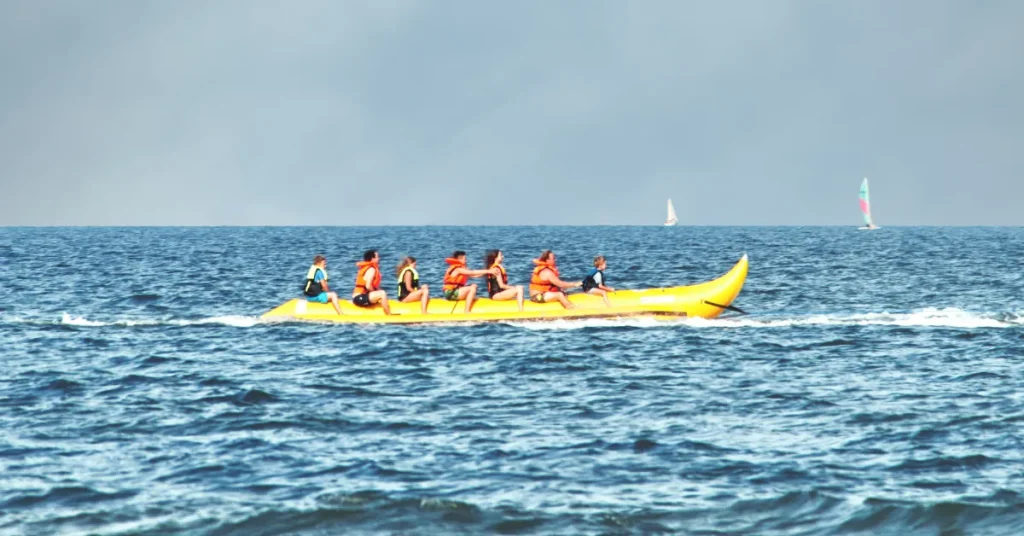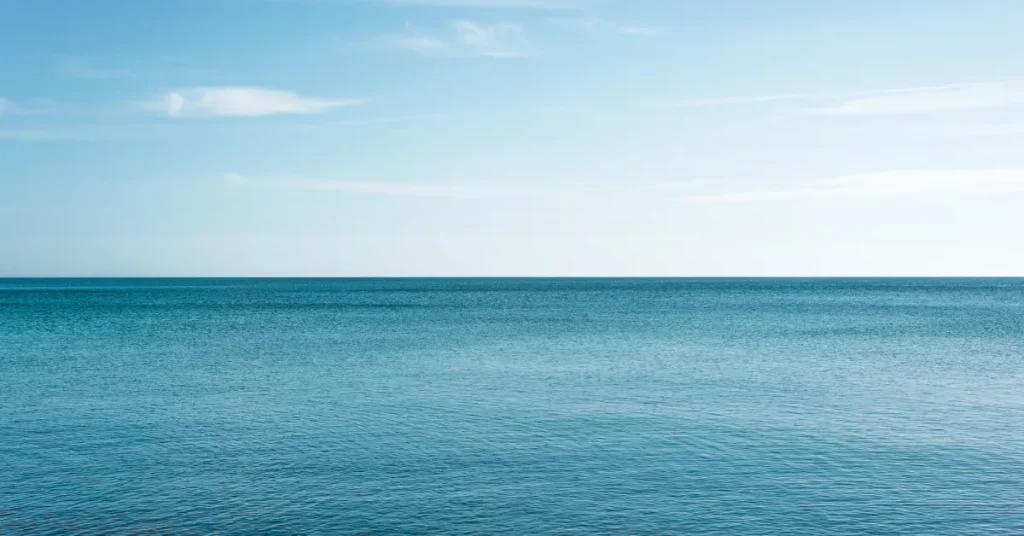The average depth of the Baltic Sea is about 55 meters. Its deepest point, Landsort Deep, reaches approximately 459 meters.
The Baltic Sea, a brackish inland sea, is one of the largest bodies of saltwater in the world.
Situated in Northern Europe, it borders the Scandinavian and Baltic peninsulas, touching countries like Sweden, Finland, Denmark, Estonia, Latvia, Lithuania, Russia, Poland, and Germany.
With its relatively shallow waters, the sea provides vital marine routes that facilitate significant regional trade.
Not only does the Baltic Sea possess ecological uniqueness due to its low salinity and ice-covered winter waters, but it also holds a rich history, playing a crucial role in the development of maritime commerce and culture within the surrounding nations.
Enthusiasts of maritime exploration and history appreciate the Baltic Sea’s depths for shipwrecks and underwater discoveries that provide insights into ancient seafaring civilizations.

The Baltic Sea: Depths And Dimensions
The Baltic Sea, a brackish sea in Northern Europe, holds fascinating secrets beneath its waves. While noted for its unique salinity levels and rich history, the depths of the Baltic Sea are often a topic of wonder and curiosity.
Let’s dive into an exploration of how deep the Baltic Sea actually is and compare it to other bodies of water.
Geographical Snapshot
Nestled in the heart of Northern Europe, the Baltic Sea touches the shores of nine countries: Denmark, Sweden, Finland, Russia, Estonia, Latvia, Lithuania, Poland, and Germany.
Its surface stretches over approximately 377,000 square kilometers, making it one of the largest brackish water bodies globally. Despite its size, the Baltic Sea is relatively shallow compared to other large seas.
| Area | Average Depth | Maximum Depth |
| Baltic Sea | 54 meters | 459 meters |
Comparing Depths: Global Perspective
To understand the depth of the Baltic Sea, it helps to compare it with other well-known seas and oceans. The average depth of the Baltic is a mere 54 meters.
In contrast, the Mediterranean Sea has an average depth of about 1,500 meters. When placed side by side with the world’s deepest point at the Mariana Trench—nearly 11,000 meters deep—the Baltic’s max depth of 459 meters seems like a shallow pond.
- Mediterranean Sea – Average Depth: 1,500 meters
- Pacific Ocean – Mariana Trench: up to 11,000 meters
- Baltic Sea – Maximum Depth: 459 meters
This comparison highlights the unique and more accessible underwater landscape of the Baltic Sea. Its shallow basins and underwater features form a world ripe for exploration, without the extreme conditions found in the deepest reaches of the ocean.
Measuring The Depths: Tools And Techniques
The Baltic Sea, a brackish sea in Northern Europe, has intrigued explorers for centuries. To unlock its secrets, we delve deep using various innovative tools and techniques.
These methods help us understand the sea’s contours, channels, and underwater features. Let’s explore these high-tech tools that map the depths of the Baltic Sea.
From Lead Lines To Sonar
Sailors of old measured depth with simple but clever tools. They used lead lines – ropes with a weight at the end. These weighted ropes were marked at intervals.
Sailors would lower them until the weight hit the seabed. By noting which mark was at the surface, they could tell the depth.
Now, sonar technology takes over this age-old practice. Ships send out sound waves that bounce off the seafloor and back to the sensor. The time it takes for the sound to return tells us the depth. This method maps vast areas swiftly and with great accuracy.
Satellite Altimetry And Depths
Satellites revolutionize how we measure ocean depths. They use a technique called altimetry. Satellites in space beam down microwaves towards the Earth’s surface. These waves bounce back and the satellite measures the time taken.
This data then helps scientists determine sea surface heights. Differences in height indicate changes on the seafloor below.
This technique is less direct than sonar but is invaluable. It maps large swathes of the ocean that ships might not cover.
Leveraging these tools, we now have detailed maps of the Baltic Sea. These maps aid in navigation, research, and preserving marine ecosystems. Understanding the sea’s depth ensures safe passage for vessels and helps protect its unique environment.
Deepest Points: Exploring The Ocean’s Pockets

The Baltic Sea, with its brackish waters, is a maritime enigma. It is not just the waves on the surface but also the profound depths that evoke mystery.
Here, we dive deep into the Baltic’s underwater valleys and discover the world beneath the waves.
Landsort Deep: The Baltic Abyss
Landsort Deep is the darkest corner of the Baltic. It plunges to staggering depths, creating an underwater realm.
The depth touches a jaw-dropping 459 meters (1,506 feet). This deep is crucial for marine research, offering a glimpse into unique environmental conditions.
Other Significant Deeps
The Baltic Sea houses several deeps, aside from Landsort. Each deep holds its unique features and they are:
- Gotland Deep: reaches approximately 249 meters (817 feet).
- Bornholm Deep: measuring around 105 meters (344 feet).
- Gdansk Deep: with depths close to 118 meters (387 feet).
These pockets are crucial for the sea’s ecosystem. Scientists study them to understand the Baltic’s health.
| Deep Name | Depth | Location |
| Landsort Deep | 459 meters | Off the coast of Sweden |
| Gotland Deep | 249 meters | East of Gotland |
| Bornholm Deep | 105 meters | North of Bornholm |
| Gdansk Deep | 118 meters | Gulf of Gdansk |
Marine Life At Varied Depths
Welcome to the mysterious world beneath the waves of the Baltic Sea. Here, marine life thrives at various depths.
Each zone of depth in the Baltic Sea presents a unique ecosystem. Creatures here have adapted to the sea’s unique conditions. Let’s dive in and discover the fascinating marine life that calls the diverse depths of the Baltic Sea home.
Adaptation To Low Salinity
The Baltic Sea is known for its low salinity levels. Marine species have adapted to survive in this unique environment. Many fish species evolved to tolerate both fresh and brackish waters. This incredible adaptation supports a diverse range of life.
- Viviparous eelpout: A fish that thrives in brackish water.
- Baltic herring: It adjusts its body to the water’s low salt content.
- Blue mussels: These filter-feeders prosper in varying salinity.
Depth-related Biodiversity
Different depths in the Baltic Sea host a variety of marine species. Each depth zone is like a different world. Unique conditions at these depths dictate the type of life we find.
| Depth | Marine Life |
| 0-30 meters | Seagrasses, cod, and flounder thrive in these waters. |
| 30-60 meters | Species like perch and pike are common here. |
| Below 60 meters | Deeper zones attract specialized species, including deep-water jellyfish. |
Each depth level supports distinct marine communities. Seagrass beds, serving as nursery grounds, are available in shallower regions.
Further down, the lower light levels encourage different forms of life that can thrive in darkness. The deepest areas are home to species adept at living in the sea’s coldest and most isolated conditions.
Human Impact On The Baltic Sea Depth
The Baltic Sea is a vital marine system, hosting diverse ecosystems. Its depth is as fascinating as its history. Yet, human activities have reshaped its very bed, affecting its depth in more ways than one might imagine.
Sea Floor Alterations
Dredging and construction have significantly changed the seabed. These alterations include:
- Deepening of shipping lanes
- Construction of underwater infrastructure
- Sea bed mining activities
These activities disturb the seabed’s natural state, causing sediment displacement, which can lead to changes in the sea’s overall depth.
Pollution And Depth Interplay
Pollution is another human activity impacting the Baltic Sea’s depth. The cycle of pollution affects the sea’s depth in various ways:
- Excess nutrients lead to eutrophication
- Algal blooms reduce oxygen levels, affecting marine life
- Siltation from runoff can alter depth
Furthermore, toxic substances like heavy metals and chemicals can settle on the sea floor, potentially altering its composition and depth.
Understanding and mitigating these impacts is crucial for the longevity of the Baltic Sea.
Mysteries Of The Baltic: Anomalies And Discoveries

The Baltic Sea, a brackish medley of saltwater from the North Sea and fresh water from surrounding rivers, holds its own undercurrent of mysteries.
Shrouded in historical tales and marinetime legends, the depth of the Baltic whispers secrets of vanished civilizations, sunken ships, and even rumored underwater anomalies.
Its depth varies, with the deepest point, Landsort Deep, reaching around 459 meters (1,506 feet). Yet, it’s not just the depth that intrigues explorers and scientists alike; it’s what lies within.
Unsolved Depths-related Enigmas
Sailors and historians suspect there’s much to be unveiled beneath the waves. The Baltic is often thick with fog and fringed with treacherous shoals, making it a graveyard for ships throughout the ages.
Some of these wrecks hold lost treasures and untold stories, steadfastly kept by the sea.
- Ghost Ships: Reportedly appearing and disappearing in the mist, these spectral vessels carry centuries of lore.
- Submerged Stone Age Settlements: Ancient remnants of human life sit enshrouded, unreachable and mysterious.
- Enigmatic Structures: Divers and researchers have stumbled upon unusual formations that challenge current historical understanding.
Recent Findings On The Seabed
The Baltic Sea continuously unveils new discoveries, propelling our understanding forward.
Returning Time Capsules: Recently, explorers have uncovered well-preserved shipwrecks, thanks to the Baltic’s low-salinity waters. These maritime relics offer a peek into seafaring life centuries ago and provide valuable data for historians and archaeologists.
| Year Discovered | Artifact |
| 2019 | 17th-century merchant ship |
| 2020 | Stone Age tools and artifacts |
Unusual Formations: Sonar scans have sketched bizarre and unexplained shapes adorning the seafloor. These oddities spark debates and draw curiosity worldwide.
- Underwater “Crop Circles”: Circles that defy simple explanation, stirring speculation of geologic activity or even extraterrestrial involvement.
- Anomalous Objects: The discovery of a disc-shaped object led to theories ranging from natural rock formations to sunken UFOs.
FAQs About How Deep Is The Baltic Sea
What Is The Average Depth Of The Baltic Sea?
The average depth of the Baltic Sea is approximately 55 meters (180 feet). This relatively shallow depth is due to its geological history and brackish water.
How Deep Is The Baltic Sea At Its Deepest Point?
At its deepest point, known as Landsort Deep, the Baltic Sea reaches a depth of around 459 meters (1,506 feet). This area is located south of the Stockholm archipelago.
What Factors Affect The Baltic Sea Depth Variations?
Variations in the depth of the Baltic Sea are influenced by glacial formations, underwater ridges, and depressions. Human activities and sea level changes also contribute to depth variations.
Does The Baltic Sea Have Any Deep Trenches Or Valleys?
Yes, the Baltic Sea contains underwater valleys and trenches. The most significant one is the Landsort Deep, which is the deepest trench in the sea.
Conclusion
Exploring the depths of the Baltic Sea reveals a fascinating underwater landscape. With an average depth of only 55 meters and a maximum of 459 meters, this sea is accessible yet profoundly mysterious. Dive into its history and secrets, and the Baltic Sea will not disappoint.
Its shallowness speaks volumes about the hidden gems resting below the surface, inviting further discovery.
Resources:
1. https://ndupress.ndu.edu/Media/News/News-Article-View/Article/3323959/germany-and-the-baltic-sea-region/
